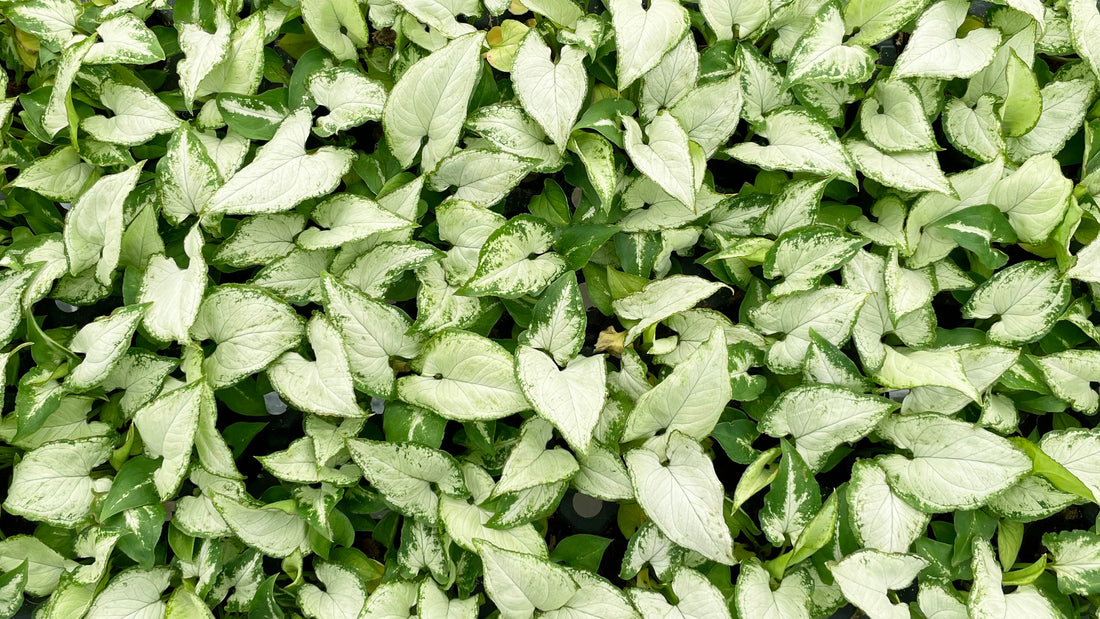Syngoniums are also known as arrowhead plants because of their unique, triangular shape. These tropical vines are native to Central and South America, both of which have dry seasons, making them semi-drought tolerant and low-lift in the care department. They offer a vibrant burst of color coming in multiple varieties ranging from bright greens to soft, creamy pinks.
Because arrowhead vines have non-demanding needs, they're popularly kept to add life (and fresh air) to homes and business spaces. Depending on how you plant the, the vines can climb, trail or become bushy. They're fast growers, rewarding their caretakers for the bare minimum with lush, full pots year-round.

GENERAL CARE
LIGHT
Low to bright indirect light, depending on the species.
WATER
Water once every 1-2 weeks or when soil is nearly dry. They are fairly drought-tolerant.
FEEDING
Use diluted plant food once a month in the spring and summer. Stop feeding in the fall and winter since the plant goes dormant and will not need the extra nutrients.
TOXICITY
Toxic when ingested in large amounts.
Care instructions are usually consistent for most syngoniums, but we always recommend researching your specific plant to make sure you get it right the first time.
COMMON ISSUES
Arrowhead plants are very easy to upkeep, but there are some common mistakes that can lead to unsightly foliage, like browning leaves or crispy tips and edges. As much as these plants love consistent waterings, soggy soil can quickly lead to problems. If you notice your leaves are darkening or browning at the edges or on stems and petioles, you've probably overwatered. Remember that it's always better to stay on the drier side, and as long as you saturate the soil properly on watering days, your plant will remain quenched. To get ahead of this potential issue, be sure to choose a well-draining soil for your syngoniums, and ensure your pot has a drainage hole or lava rocks on the bottom to protect the roots.

Syngoniums have a tendency to grow wild and lush, and can quickly take up space. If you find your plant is growing out of control, spilling out of the pot and toppling onto your shelf or floor space, you may want to consider using a moss pole to stake it, or go with vertical planting, potting it into a wall or ceiling planter allowing it to cascade downward. You may need to prune this plant often, but the beautiful thing about that is that there is plenty of opportunity to propagate cuttings to multiply your plant supply and gift to friends. As long as your arrowhead cutting has a node, you can root it in water or soil.


